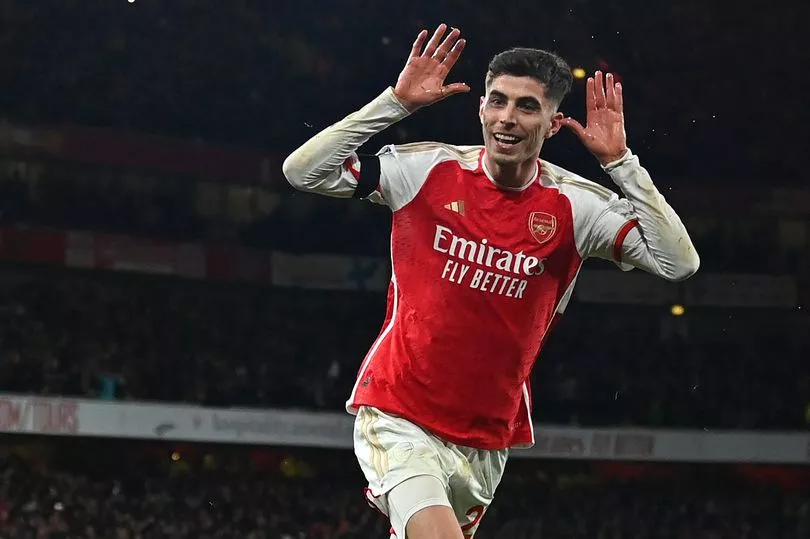Of the 12 games Kai Havertz started as a striker last season for Arsenal in the Premier League in the run-in, Mikel Arteta’s side were victorious in all-but-one of them. That was a 0-0 draw away to Manchester City, and a result that many at the time accepted as being respectable even if he didn’t turn the title race.

It’s notable that when he returned to a deeper role three matches later, Aston Villa went to the Emirates Stadium and disrupted matters, winning 2-0 and ultimately landing a fatal blow, as things turned out. Although Arsenal only failed to win three of the first 12 he played in as a midfielder, there was a stark difference.
The Gunners scored 26 in the initial 12 with Havertz as one of the attacking No.8s, and they managed 29 in the last dozen. The difference was marginal but his goal tally was markedly better. One penalty and a single assist from midfield to start the campaign compared to eight goals with six assists.
Havertz had been unlocked, it was suggested. Arteta had done it again. £60million down the drain, the fans sang ironically. Finally, after three years of trying at Chelsea, someone had found the key to the enigma.
The thing is, Havertz isn’t doing much different at Arsenal to what he was at Stamford Bridge. He scored more goals and did it with extra assists, but the underlying numbers aren’t massively deviating.
His xG was slightly higher in 2023/24 than in 2022/23, but instead of underperforming by 4.6, he proved more clinical. His passes to teammates were converted, and ultimately he produced. Arteta still ended up with Havertz being deployed as a striker though, and even when Gabriel Jesus returned there was no place in the side for him regularly.
When it mattered, Havertz was the chosen No.9. This is a movement away from what he was signed for. Arsenal planned for the German to be a box-crashing, ghostly midfielder, creating space and exploiting his height. Chelsea wished to do the same.
Is Havertz being unleashed here, or is he just in a better team? His output is better, but what he’s being asked to do is not hugely different to the role three Chelsea managers eventually picked for him. Lead the line, Kai, and offer some assistance whilst doing so.
This begs the question, why are Arsenal so keen to add an out-and-out centre forward to their ranks? It appears that the Havertz experiment still has another stage, and it involves going backwards.
If a new striker does join then it is likely – especially given the names and prices being suggested – that they will be starting. Havertz, as one of the success stories for Arsenal in 2024, is also expected to have a big part to play. Arteta is not going to start operating with two central options like this, so Havertz will be shifted.
This makes sense. It does raise questions over the alchemy of the team, and Havertz’s struggles to master the intensity and demands of being an effective No.8 don’t make this easy to solve, but in theory Arsenal could have another mainstream attacker in the side without compromising their standout stars.
Bukayo Saka, Martin Odegaard, and presumably Gabriel Martinelli, are not going to be missing out that often. What Arteta will need, then, with Havertz, is to get him into flowing from deep like Odegaard himself works.
The Arsenal captain is one part of a deadly triangle on the right side that offers balance, creativity, and pure danger to opposition teams. Along with Saka and Ben White in his repurposed full-back role, the trio dominate proceedings.
More often than not Saka is doubled up on, but that can leave room for Odegaard, and he doesn’t need much of it to make an impact. Be it rehearsed and choreographed passing patterns, or moments of fluid joy from the Saka or Odegaard, mainly, Arsenal patrol and penetrate on this flank.